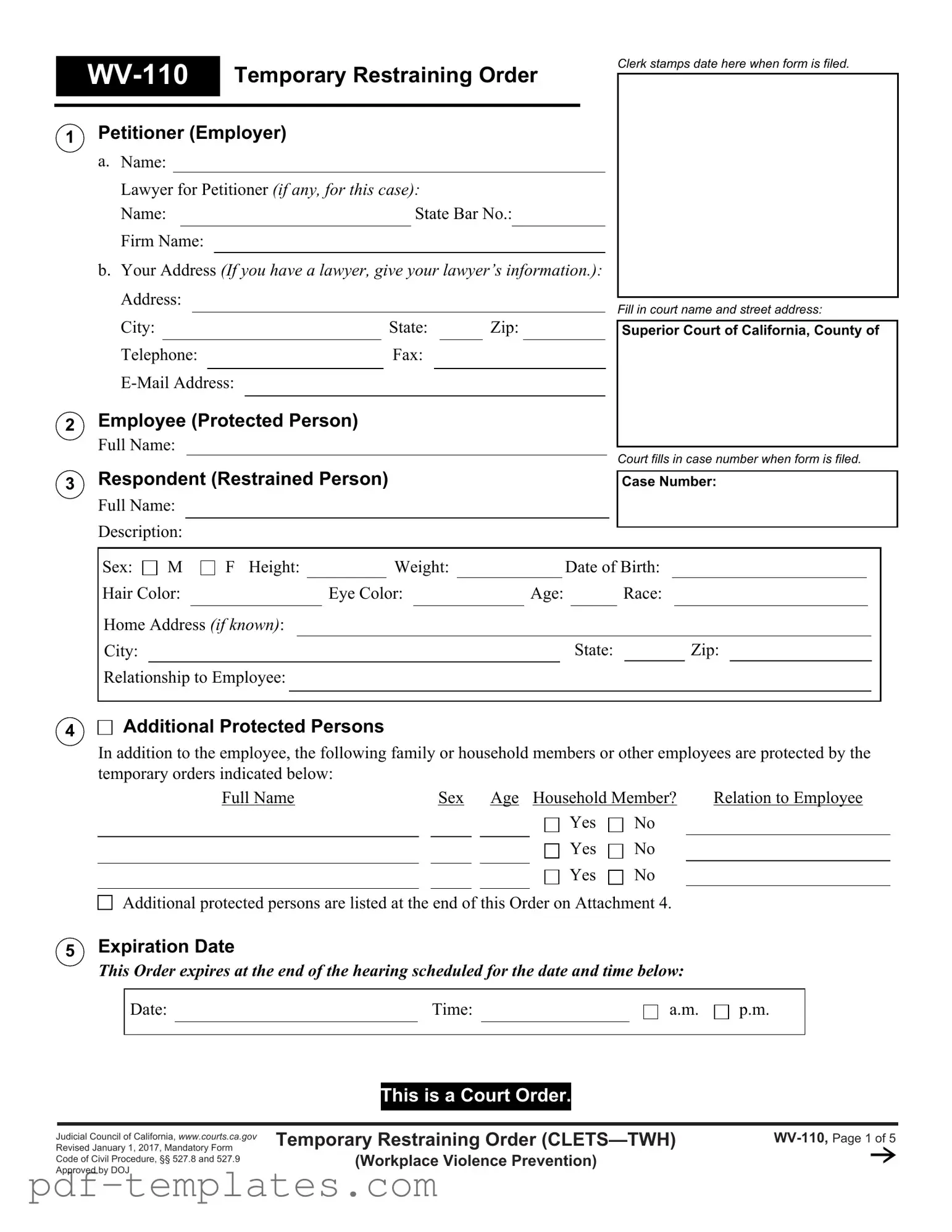The Fake Restraining Order form shares similarities with a Domestic Violence Restraining Order (DVRO). Both documents aim to protect individuals from harassment, stalking, or violence. A DVRO is specifically designed for situations involving domestic relationships, such as spouses or intimate partners. Like the Fake Restraining Order, it requires detailed information about the parties involved and outlines prohibited actions. Both forms also emphasize the consequences of non-compliance, including potential criminal charges.
Another document that resembles the Fake Restraining Order is the Civil Harassment Restraining Order (CHRO). This type of order is intended for individuals who are experiencing harassment from someone they do not have a close relationship with, such as neighbors or acquaintances. Similar to the Fake Restraining Order, a CHRO includes specific instructions on what actions the restrained person must avoid and can also protect additional individuals, such as children or family members.
In understanding the variety of protective measures available, one can recognize that a cease and desist letter form, as outlined in All Florida Forms, serves as an essential tool for individuals seeking to formally demand the cessation of unlawful actions before escalating to legal proceedings. This instrument not only emphasizes the gravity of the situation but also indicates the complainant's willingness to confront potential legal challenges if the unwanted behavior continues.
The Temporary Protective Order (TPO) is also comparable to the Fake Restraining Order. A TPO is typically issued in emergency situations to provide immediate protection until a more permanent order can be established. Like the Fake Restraining Order, it requires the petitioner to provide details about the respondent and outlines specific behaviors that are prohibited. Both documents serve as a legal means to ensure safety in urgent circumstances.
The Order of Protection is another document that bears resemblance to the Fake Restraining Order. This order is often used in cases involving threats or acts of violence and can be issued in both civil and criminal contexts. Like the Fake Restraining Order, it delineates the actions that the restrained individual must avoid and can include provisions for firearm restrictions. Both documents aim to create a safer environment for the protected individuals.
The No-Contact Order is similar to the Fake Restraining Order in that it specifically prohibits the restrained person from contacting the protected individual. This order can be issued in various legal contexts, including criminal cases. Just like the Fake Restraining Order, it emphasizes the importance of adhering to the terms to avoid legal repercussions, ensuring that the protected person feels secure from unwanted interactions.
Lastly, the Workplace Violence Restraining Order is closely related to the Fake Restraining Order. This document is specifically tailored for situations involving threats or acts of violence in a workplace setting. It shares many similarities with the Fake Restraining Order, including the requirement to detail the incidents leading to the order and the specific restrictions placed on the respondent. Both forms prioritize the safety of individuals in environments where they should feel secure and protected.
